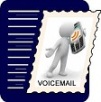Setting Up An Online Learning Experience
-
What is the significance of knowing the technology available to you?
Knowing the technology that is available to develop an engaging online learning experience is imperative and one of the significant strategies to focus when presenting a effective online course. Planning and developing a interactive CMS that the facilitator is comfortable with can enable the implementation of the strategic online learning environment. This can provide the learner with the three important presence social, cognitive and teaching. Through technology the facilitator’s responsibility can be plan out to invoke positive, supportive and encouraging content, this will ensure that the learner will participate. Developing techniques through technology encourages action from learner and permits interactive engagement. Today, there are many different technology tools that are able to address a multitude of learning abilities (Beldarrain, 2006).When correctly prepared the delivery of material through technology can be invaluable, feedback can be personalized and knowledge can accessed in cost effective way. Because technology can be integrated with simulations, interactivity and authentic resource material the distance learning environment can achieve a enriching learning experience. These types of activities permits students the ability to connect with their prior learning experiences, construct a new knowledge base, demonstrate mastery and show creative problem solving abilities (Beldarrain, 2006).
- Why is it essential to communicate clear expectations to learners?
The need for communicating expectation clearly can be achieved through learning objectives, course syllabus and rubrics. Establishing learning objectives, and outcomes provides the learners the ability to know what is expected right from the beginning 0f the course. This will allow clarity of expectations, building knowledge and competencies for learners and a presence of facilitating the direct instruction and resolving any issues with individual students (Boettcher and Conrad, 2010).
This also institutes what is expected from the facilitators what contributions are required from the learner.
Another essential goal for clear communication on a regular bases is to provide guidance to student and establish an online presence of availability. According to Boettcher and Conrad, 2010 this means that the facilitator should exert a relatively strong teaching presence as well as encourage the learners to be clear about what knowledge they are being provided from the course content by demonstrating the use of resource materials, prior knowledge and experience through the sharing of information in the community discussion boards, blogs, reports, and peer to peer collaboration.
- What additional considerations should the instructor take into account when setting up an online learning experience?
The facilitator should devote thought and planning to preparing a ice-breaker or getting acquainted activity at the beginning of the course.”Opening the lines of communication in the learning community in a non-threatening manner”(Conrad and Donaldson, 2011). This will allow the learners to establish a online presence and become familiarize with peers, collaborating as well as working within the learning community. Boettcher & Conrad discuss the importance of establishing an online presence of the instructor as well as building an effective learning community (2010). Even if a course has the best course management system, accompanying software, and integrated with the latest technology tools, if the instructor does not successfully develop a presence within that learning community within the first few weeks of the course learners may not be as motivated or successful.
Reference:
Boettcher, J. V., & Conrad, R. (2010). The online teaching survival guide: Simple and practical pedagogical tips. San Francisco, CA: Jossey-Bass.
Conrad, R., & Donaldson, J. A. (2011). Engaging the online learner: Activities and resources for creative instruction(Updated ed). San Francisco, CA: Jossey-Bass.
Beldarrain, Y. (2006). Distance education trends: Integrating new technologies to foster student interaction and collaboration. Distance Education, 27(2),139–153.




















